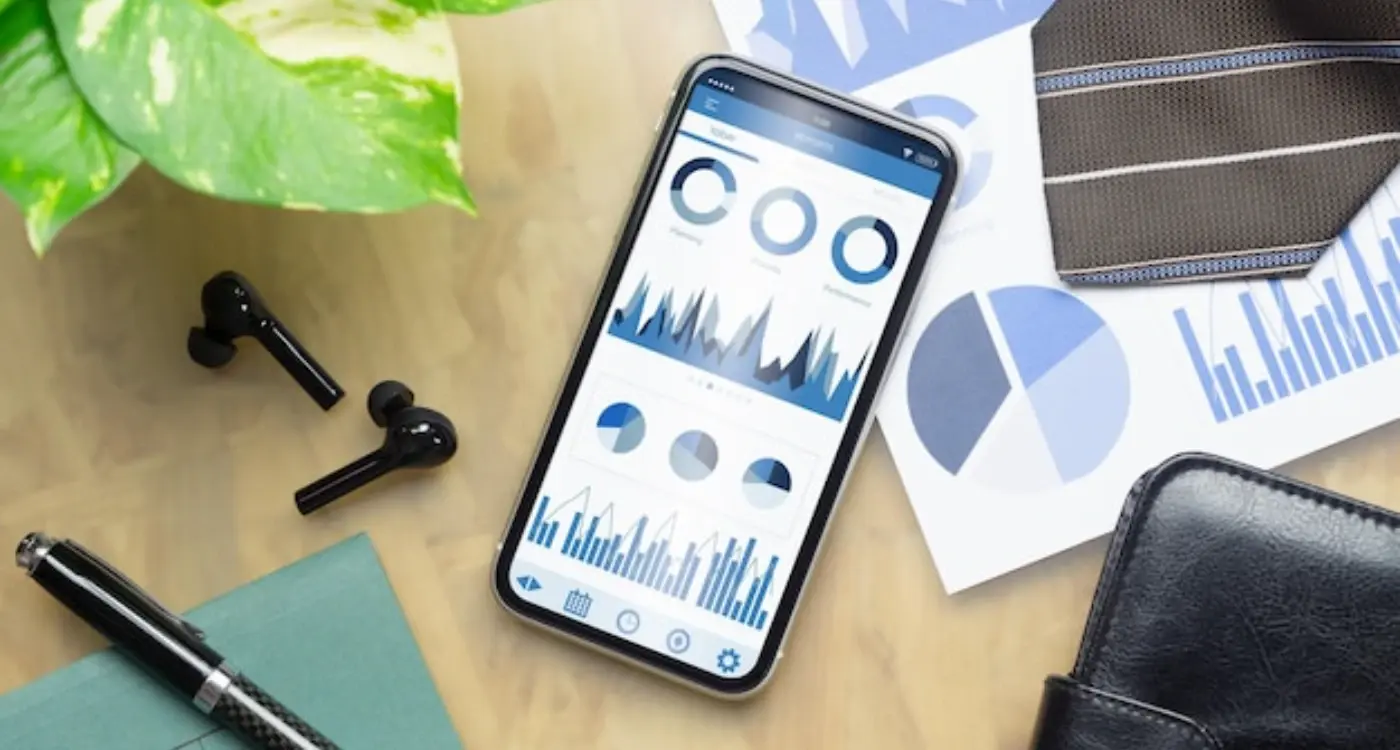How Can I Justify App Development Costs To My Board?
Picture this: you've got a brilliant mobile app idea that could transform your business, but there's one massive hurdle standing in your way—convincing your board to approve the investment. You're not alone in this challenge. Studies show that over 70% of mobile app projects face significant resistance during the executive approval process, not because the ideas lack merit, but because the business case isn't presented effectively.
I've worked with countless businesses over the years, from ambitious startups to established enterprises, and I've seen this scenario play out time and time again. The technical team knows the app will work brilliantly; the marketing team can see the potential for customer engagement; but when it comes to investment justification, everyone suddenly goes quiet. The board starts asking tough questions about budgets, timelines, and returns that nobody feels confident answering.
The difference between a successful app proposal and a rejected one isn't the quality of the idea—it's the quality of the business case supporting it
This guide will walk you through every step of building a compelling case for your mobile app development project. From understanding true costs to presenting data that boards actually care about, we'll cover the practical strategies that get apps approved and funded properly.
Understanding the Real Cost of App Development
Let me be honest with you—most businesses get app development costs completely wrong. I've seen countless companies budget for what they think an app should cost, only to discover they're missing about half the picture. The sticker price your development team gives you? That's just the beginning.
When we talk about real costs, we're looking at far more than just the initial build. Sure, creating your app might cost £50,000 or £150,000 depending on complexity, but that's like buying a car and forgetting about petrol, insurance, and maintenance. Your app will need ongoing updates, bug fixes, server costs, and regular feature improvements to stay competitive.
The Hidden Costs That Catch Everyone Out
Here's what most people don't factor into their budgets:
- App store fees and submission costs
- Third-party integrations and API charges
- Security updates and compliance requirements
- Customer support and user feedback management
- Marketing and user acquisition costs
- Analytics and performance monitoring tools
I always tell my clients to budget roughly 20-30% of their initial development cost annually for maintenance alone. This isn't about being pessimistic—it's about being prepared. When you present realistic figures to your board, you're showing them you understand the full commitment, not just the glossy surface.
Building Your Business Case with Data
Here's what I've learned after presenting countless mobile app proposals to boards—data wins arguments every single time. You can't just walk into a boardroom and say "we need an app" without backing it up with solid numbers. The executives want to see proof that this investment justification makes sense for the business.
Start by gathering user research data about your customers' mobile behaviour. How many of them are using smartphones? What apps do they currently use? Are they struggling with your existing website on mobile? This information shows there's a real need for your mobile app solution.
Market Research That Matters
Don't just look at your own customers—examine what your competitors are doing. If three of your main rivals have apps, that's telling you something about market expectations. But here's the thing: you need to be smart about audience research and focus on metrics that matter to your board.
- Customer acquisition costs through different channels
- Average order values on mobile versus desktop
- User engagement rates and session lengths
- Revenue per user across different platforms
Internal Performance Metrics
Look at your current digital performance too. If 60% of your website traffic comes from mobile devices but only 20% of sales do, that's a clear opportunity. These gaps in performance become powerful arguments for executive approval when you present them properly.
Create a simple dashboard showing mobile traffic versus mobile conversions—this visual comparison often gets board attention faster than lengthy reports.
Calculating Return on Investment for Mobile Apps
Right, let's talk numbers—the bit that makes most people's eyes glaze over but gets board members sitting up straight! I've seen brilliant app ideas shot down because nobody could explain how they'd make money back, and I've watched mediocre concepts get green-lit because someone did their maths homework.
The good news? ROI calculations for mobile apps aren't rocket science, though they do require some careful thinking about what success looks like for your business.
Direct Revenue Calculations
Start with the obvious money-makers: app store sales, in-app purchases, subscription fees, and advertising revenue. If you're charging £2.99 for downloads and expecting 10,000 users in year one, that's £29,900 minus platform fees (usually around 30%). Simple enough.
But here's where it gets interesting—most successful business apps don't make money directly from the app itself. They make money from what the app enables.
Indirect Value Creation
This is where things get clever. Your app might save customer service costs, increase sales conversion rates, or reduce staff training time. I worked with a retail client whose app reduced in-store queue times by 40%—that translated to measurable improvements in customer satisfaction scores and repeat purchases.
| Benefit Type | Measurement Method | Typical Timeline |
|---|---|---|
| Cost Savings | Reduced support tickets/calls | 3-6 months |
| Revenue Growth | Increased conversion rates | 6-12 months |
| Efficiency Gains | Time saved per transaction | 1-3 months |
The trick is being realistic about timeframes and conservative with your estimates. Board members have seen too many overly optimistic projections to trust pie-in-the-sky numbers.
Risk Assessment and Mitigation Strategies
I'll be honest with you—boards hate surprises, especially expensive ones. When presenting your mobile app investment justification, you need to address the elephant in the room: what could go wrong? After eight years of building apps for everyone from scrappy startups to FTSE 100 companies, I've seen my fair share of projects that didn't go to plan. The good news? Most risks are predictable and manageable if you plan ahead.
Common Development Risks
Technical challenges top the list of concerns for most executives seeking executive approval. Your development team might encounter unexpected integration issues with existing systems, or third-party services could change their APIs mid-project. Budget overruns are another biggie—scope creep happens when stakeholders keep adding "just one more feature" without adjusting timelines or resources.
The biggest risk isn't technical failure; it's building something users don't actually want or need
Your Risk Mitigation Playbook
Start with a thorough discovery phase before any coding begins. This catches potential technical roadblocks early when they're cheaper to fix. Build in a 20% contingency buffer for both time and budget—trust me, you'll need it. Most importantly, validate your app concept with real users before presenting to the board; their feedback will strengthen your case and reduce the risk of building something nobody wants.
Timeline and Resource Planning
Getting your timeline wrong is one of the fastest ways to blow your budget—and your board's confidence. I've seen too many projects where well-meaning teams promise the moon in three months, only to deliver a half-baked app six months later. The trick is being realistic from the start, not optimistic.
Your board needs to see a clear roadmap that shows when money gets spent and when value gets delivered. Break your project into phases that make sense to non-technical people. Don't just say "development takes 4-6 months"—show them exactly what happens in each phase.
Key Development Phases
- Discovery and planning (2-4 weeks)
- Design and prototyping (3-5 weeks)
- Core development (8-16 weeks)
- Testing and refinement (2-4 weeks)
- Launch preparation (1-2 weeks)
Resource planning isn't just about developers—you'll need designers, project managers, testers, and often subject matter experts from your own team. Factor in holidays, sick days, and the fact that your internal stakeholders have day jobs too.
Build buffer time into every phase. Not because you're planning to fail, but because software development is unpredictable. Your board will appreciate honesty over false promises; they've probably been burned by overly optimistic timelines before.
Before you start any development, it's crucial to understand whether to build internally or outsource your app development—this decision will significantly impact your timeline and resource requirements.
Presenting to Your Board Effectively
I've sat through countless boardroom presentations over the years, and let me tell you—the difference between getting executive approval and walking away empty-handed often comes down to how you present your case. Your board doesn't want to hear about technical specifications or the latest development frameworks; they want to understand the business impact of your mobile app investment.
Start with the problem you're solving, not the solution you're proposing. Paint a clear picture of what's happening right now without this app—lost revenue, frustrated customers, competitive disadvantage. Then show them exactly how the mobile app addresses these pain points and drives measurable business outcomes.
Structure Your Presentation for Maximum Impact
Keep your presentation focused on three key areas that boards care about most:
- Financial returns and revenue impact
- Risk mitigation and competitive positioning
- Timeline and resource requirements
- Success metrics and measurement plan
Bring printed executive summaries to your board meeting. Even in our digital age, having a one-page summary they can hold and refer back to makes your investment justification feel more tangible and professional.
Making Complex Information Digestible
Remember, not everyone in that room speaks tech. Translate your development costs into business language they understand—customer acquisition costs, lifetime value improvements, operational efficiency gains. Use visual aids like charts and graphs to show projected ROI timelines, but don't overwhelm them with data.
End with a clear ask and next steps. Be specific about what you need from them and when, making it easy for them to say yes to your mobile app proposal.
Common Objections and How to Address Them
Right, let's talk about the elephant in the room—the objections you're going to face when you walk into that boardroom. I've been through this dance more times than I can count, and trust me, the questions are pretty predictable. The good news? That means you can prepare proper answers that actually address their concerns rather than dancing around them.
Budget and Cost Concerns
The first objection will almost always be about money. "Why does this cost so much?" or "Can't we build something cheaper?" Here's the thing—you've already done your homework on ROI calculations and timelines. Remind them that quality app development is an investment, not an expense. Show them the projected revenue figures and mobile app revenue potential. Break down what they're actually paying for: design, development, testing, security, and ongoing maintenance.
Market Timing and Competition
Someone will inevitably ask why now, or point out that competitors already have apps. This is where your market research shines. Present data showing user demand, market gaps, and how your app will differentiate itself. Address timing concerns by showing the cost of waiting versus the opportunity cost of not acting.
- Prepare specific revenue projections with timelines
- Show competitor analysis and differentiation strategies
- Present user research data supporting demand
- Have backup plans for reduced scope if budget is tight
- Demonstrate long-term value beyond initial launch
The key is staying calm and sticking to facts. Every objection is actually an opportunity to show you've thought this through properly.
To strengthen your case, consider studying what makes stellar apps and incorporating those principles into your proposal to demonstrate your commitment to quality.
Conclusion
Getting executive approval for mobile app development doesn't have to be a battle—it's about presenting the right information in the right way. I've seen countless projects get the green light when teams focus on solid business cases backed by real data rather than wishful thinking.
The key is showing your board that you've done your homework. When you walk into that boardroom with clear ROI projections, detailed risk assessments, and realistic timelines, you're demonstrating that this isn't just another tech expense—it's a strategic investment. Your board members aren't trying to be difficult; they're protecting the company's resources and need to see that you understand the full picture.
Remember, mobile app projects that get funded are the ones where someone has taken the time to understand what matters to decision-makers. Revenue growth, cost reduction, competitive advantage, customer retention—these are the metrics that make boards sit up and take notice. Frame your app development costs around these business outcomes and you'll find the conversation shifts from "why does this cost so much?" to "when can we start?"
The investment justification process might seem daunting, but it's actually making your project stronger. By thinking through every angle before you present, you're setting your mobile app up for success from day one.
Share this
Subscribe To Our Learning Centre
You May Also Like
These Related Guides

How Do I Calculate My App Development Budget Properly?

How Do You Calculate ROI for Your Enterprise App Investment?



